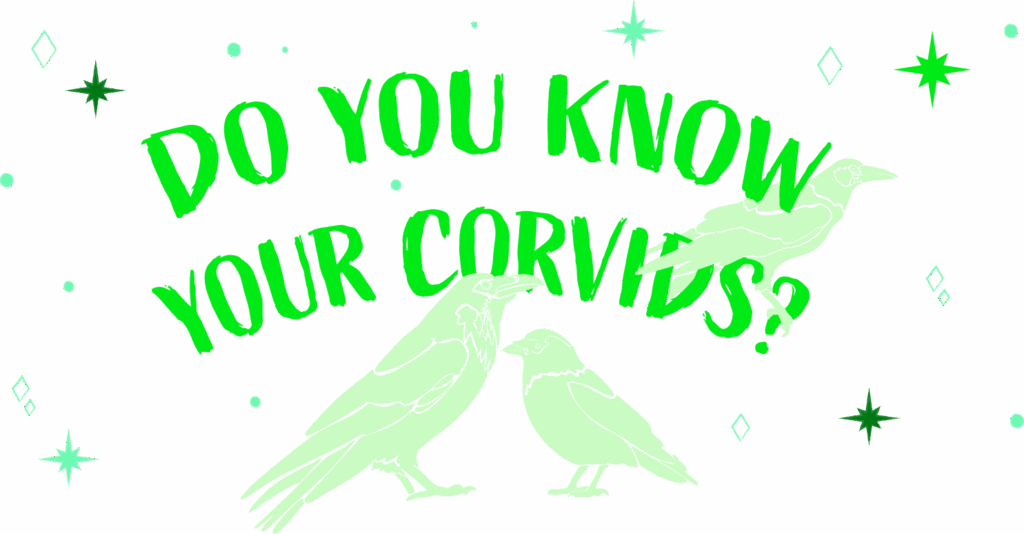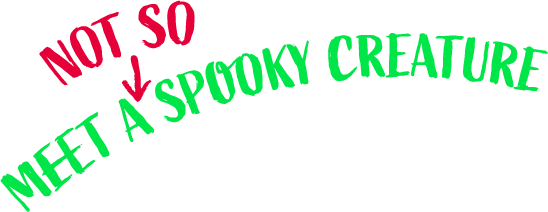
Ravens have captivated humans for thousands of years with their striking black feathers and mysterious nature. These magnificent birds have often been unfairly cast as harbingers of doom. But this couldn’t be further from the truth.


Can you spot the raven myths?
Test your family’s knowledge!

Click to reveal the truth
No...It's a myth
Ravens weren’t always seen as bad omens! In fact, for most of history, ravens were considered symbols of wisdom, intelligence, and even good luck. Check out our next section for more information about their place in folklore.
Click to reveal the truth
They might be part of the same family, but there are plenty of differences.
Ravens and crows are a part of the same family of birds – corvids. They are known to be some of the most intelligent bird species. However there are some significant differences between the 2. Ravens are:
- Much larger
- They have large throat feathers called hackles.
- Adult ravens do not flock together.
- They are masters at flight.
- They have different calls
- Complex social behaviours.

Click to reveal the truth
Woops you got ravens confused with crows.
In Japan crows have developed a way to crack open nuts by dropping them on cars at traffic lights.

Click to reveal the truth
Ravens are clever hunters
While ravens do eat carrion (dead animals), they’re actually incredible hunters and problem solvers too. They eat insects, small mammals, eggs, and when they are juveniles they work together in teams to find food. They’re nature’s clean-up crew AND skilled hunters!
Click to reveal the truth
Ravens are not pest
Sometimes farmers wrongly blame ravens for harming sheep, but scientists have shown this isn’t true. Ravens have been unfairly blamed for problems they don’t actually cause – just like red kites and some other birds. The stories about ravens being dangerous to farm animals are made up and not based on real facts.
Click to reveal the truth
There's a fact hidden in this.
Ravens have amazing mimicry skills and can copy human words – sometimes very clearly! However, they don’t understand what they’re saying or hold conversations like we do. They simply repeat sounds they hear often, similar to parrots. Ravens are still incredibly clever birds with their own ways of communicating!
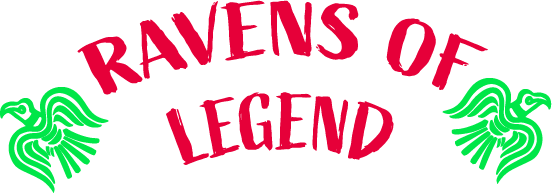
Over the centuries, the raven has been the subject of mythology, folklore, art and literature around the world. Here we are going to share just a couple of the myths they feature in.
Norse Mythology
The importance of the raven to Vikings is shown by how often the bird’s image is used on their armour, helmets, shields and banners, as well as in carvings on longships.
In Norse mythology, the god Odin had two ravens, Huginn and Muninn, who flew across the nine worlds gathering wisdom and knowledge for their master.
The Norse Jarls of Orkney used the image and it is still used today at the yearly Viking festival of Up-Helly-Aa in Shetland.
Tower of London
The most famous ravens in Britain live at the Tower of London! Legend says that if the ravens ever leave the Tower, the Crown will fall and Britain will collapse (this isn’t true!).
There is still a Ravenmaster at the Tower who takes care of at least six ravens. Currently, the Tower is home to seven ravens: Jubilee, Harris, Poppy, Georgie, Edgar, Branwen, and Rex.
Celtic Raven Magic
In ancient British and Celtic mythology, ravens were sacred birds:
- The Morrigan: Celtic goddess of war and fate, often appeared as a raven
- Bran the Blessed: A giant king in Welsh mythology whose name means “raven”
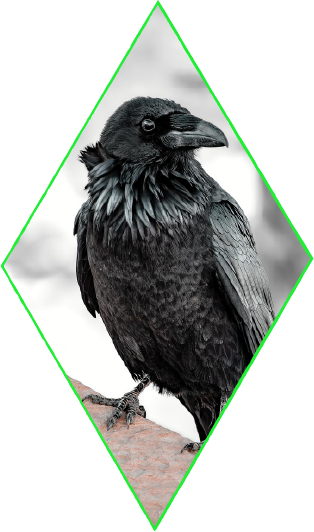

Britain’s largest corvid, the common raven, is among the most intelligent creatures on our planet—a brilliant problem-solver with a complex family life, playful personality, and remarkable communication skills—yet continues to be persecuted and scapegoated. Here at Spooky Mythbusters, we’re determined to bust those myths and celebrate these marvellous birds.
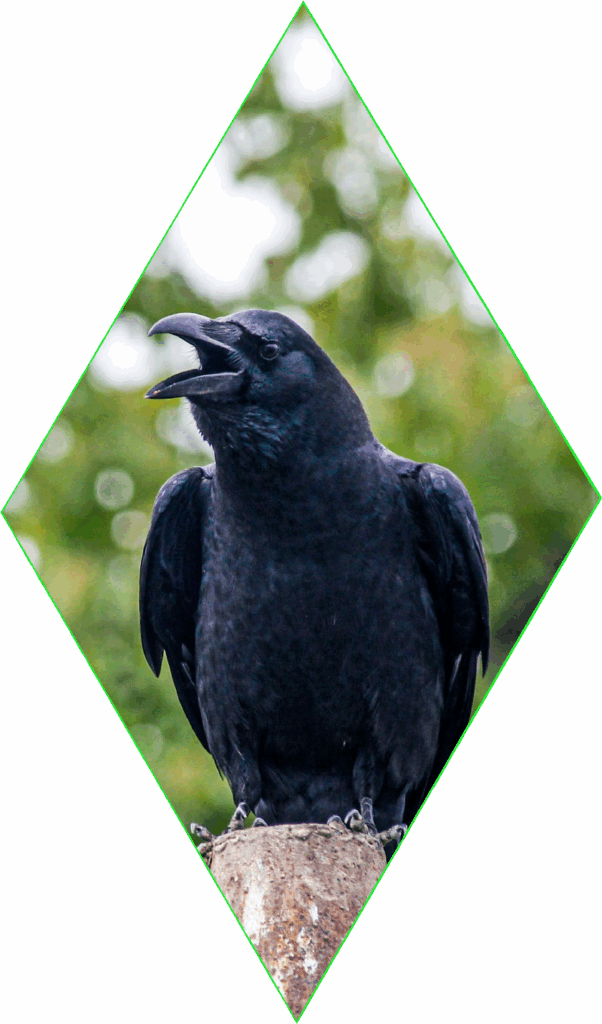
Name
Wingspan
Length
Weight
Lifespan
Diet
Habitat
IUCN Red list
Common Raven (Corvus corax) aka Northern Raven
120cm-150cm
60cm-68cm
800g-1,500g
10-15 years
Carrion, small mammals, eggs, small birds, invertebrates
Woodland, Upland, Urban, Suburban, Intertidal, Farmland
Least concern

Unique Tail
Ravens have a diamond shaped tail.
Throat feathers
Ravens have throat feathers called hackles that puff out when they call.
Beautiful feathers
Their feathers are glossy black with green, blue and purple sheen.
Large beak
Ravens have incredibly strong large beaks.
Excellent memory
Ravens can hold a grudge! They have an excellent memory for faces and places.
Loyal
Ravens are loyal and protective of their families.
Acrobatic flyers
Adult ravens have been seen flying upside down.
Master tool users
Ravens use sticks as tools as well as rocks.
Problem solvers
Ravens are incredibly smart birds able to solve a variety of problems.

In this video, Chris Packham explores just how clever they really are as part of his Animal Einstein series.

Ravens have syrinx’s, which is the equivalent to our voice box, through this they are able to make some amazing sounds. For ravens raised in captivity, they have been able to mimic human sounds like Fable here.

Whilst I was researching ravens I came across this youtube channel ‘A shot of wildlife’ sharing an overview of the species by Liam Smith.
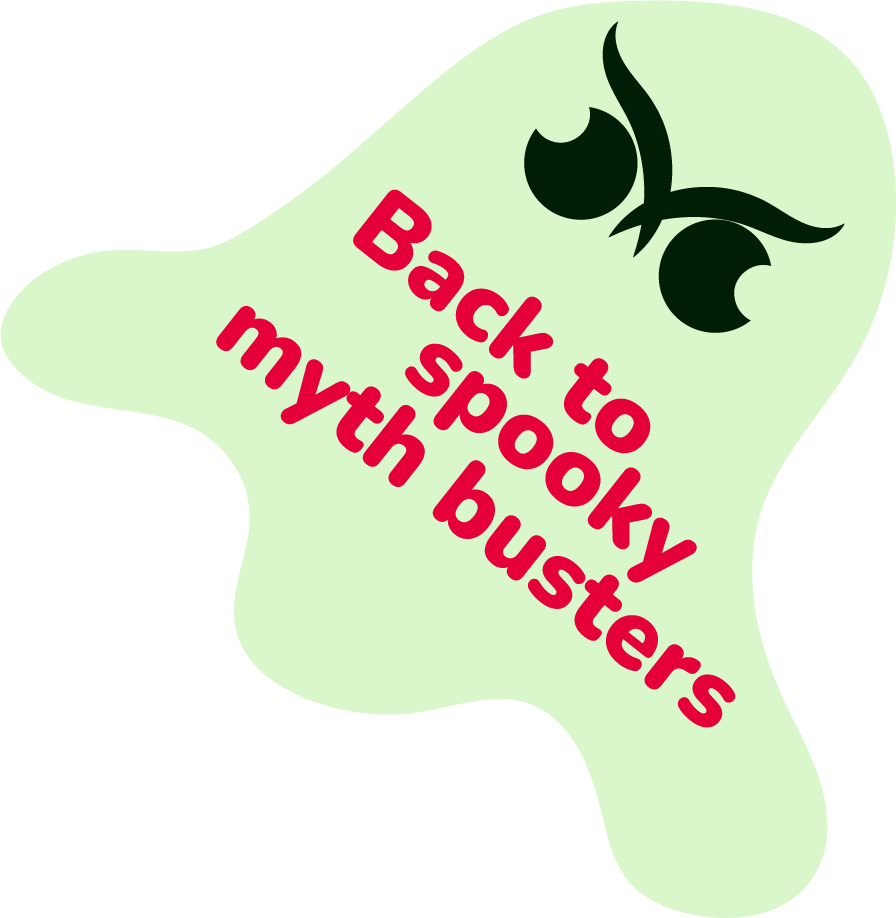

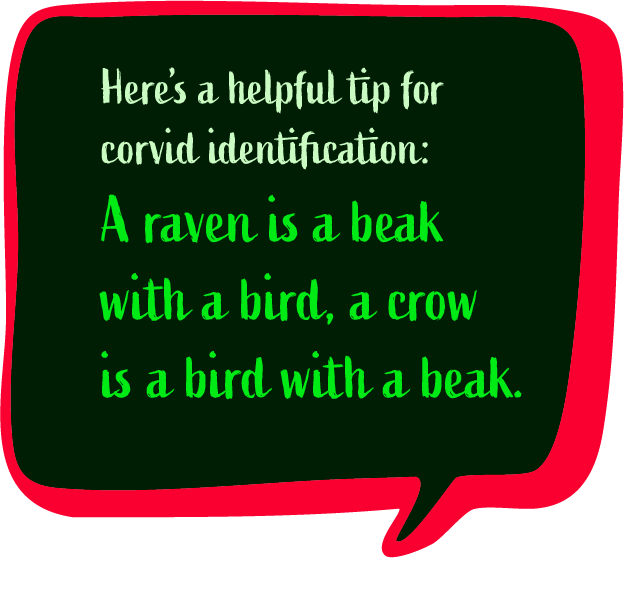

Ravens have captivated humans for thousands of years with their striking black feathers and mysterious nature. These magnificent birds have often been unfairly cast as harbingers of doom. But this couldn’t be further from the truth.
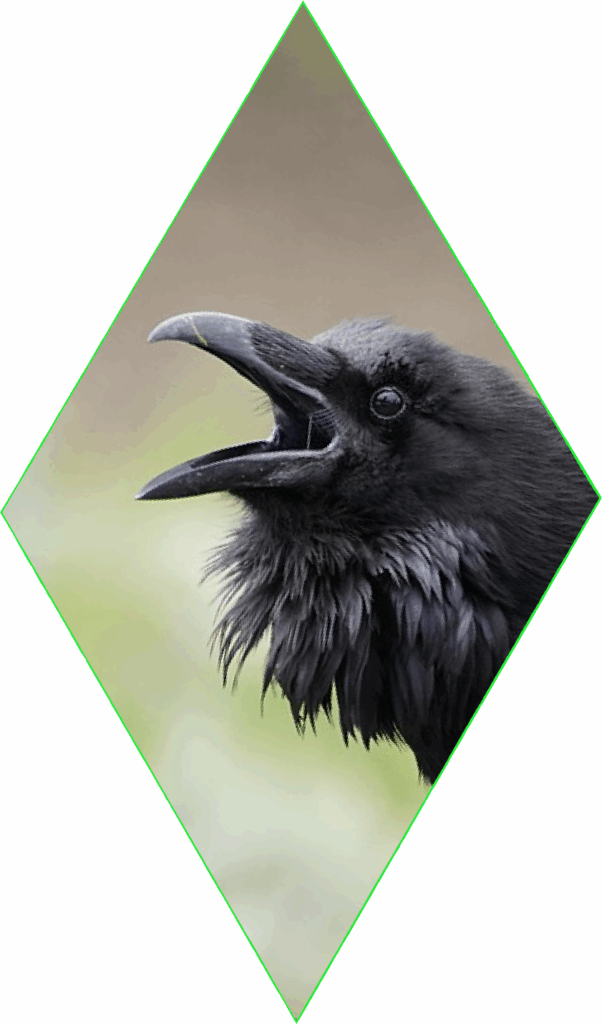


Can you spot the raven myths?
Test your family’s knowledge!

Click to reveal the truth
No...It's a myth
Ravens weren’t always seen as bad omens! In fact, for most of history, ravens were considered symbols of wisdom, intelligence, and even good luck. Check out our next section for more information about their place in folklore.

Click to reveal the truth
They might be part of the same family, but there are plenty of differences.
Ravens and crows are a part of the same family of birds – corvids. They are known to be some of the most intelligent bird species. However there are some significant differences between the 2. Ravens are:
- Much larger
- They have large throat feathers called hackles.
- Adult ravens do not flock together.
- They are masters at flight.
- They have different calls
- Complex social behaviours.

Click to reveal the truth
Woops you got ravens confused with crows.
In Japan crows have developed a way to crack open nuts by dropping them on cars at traffic lights.

Click to reveal the truth
Ravens are clever hunters
While ravens do eat carrion (dead animals), they’re actually incredible hunters and problem solvers too. They eat insects, small mammals, eggs, and when they are juveniles they work together in teams to find food. They’re nature’s clean-up crew AND skilled hunters!

Click to reveal the truth
Ravens are not pest
Sometimes farmers wrongly blame ravens for harming sheep, but scientists have shown this isn’t true. Ravens have been unfairly blamed for problems they don’t actually cause – just like red kites and some other birds. The stories about ravens being dangerous to farm animals are made up and not based on real facts.

Click to reveal the truth
There's a fact hidden in this.
Ravens have amazing mimicry skills and can copy human words – sometimes very clearly! However, they don’t understand what they’re saying or hold conversations like we do. They simply repeat sounds they hear often, similar to parrots. Ravens are still incredibly clever birds with their own ways of communicating!

Over the centuries, the raven has been the subject of mythology, folklore, art and literature around the world. Here we are going to share just a couple of the myths they feature in.
Norse Mythology
The importance of the raven to Vikings is shown by how often the bird’s image is used on their armour, helmets, shields and banners, as well as in carvings on longships.
In Norse mythology, the god Odin had two ravens, Huginn and Muninn, who flew across the nine worlds gathering wisdom and knowledge for their master.
The Norse Jarls of Orkney used the image and it is still used today at the yearly Viking festival of Up-Helly-Aa in Shetland.
Tower of London
The most famous ravens in Britain live at the Tower of London! Legend says that if the ravens ever leave the Tower, the Crown will fall and Britain will collapse (this isn’t true!).
There is still a Ravenmaster at the Tower who takes care of at least six ravens. Currently, the Tower is home to seven ravens: Jubilee, Harris, Poppy, Georgie, Edgar, Branwen, and Rex.
Celtic Raven Magic
In ancient British and Celtic mythology, ravens were sacred birds:
- The Morrigan: Celtic goddess of war and fate, often appeared as a raven
- Bran the Blessed: A giant king in Welsh mythology whose name means “raven”


Britain’s largest corvid, the common raven, is among the most intelligent creatures on our planet—a brilliant problem-solver with a complex family life, playful personality, and remarkable communication skills.
Yet continues to be persecuted and scapegoated. Here at Spooky Mythbusters, we’re determined to bust those myths and celebrate these marvellous birds.
Name
Common Raven (Corvus corax) aka Northern Raven
Wingspan
120cm-150cm
Length
60cm-68cm
Weight
800g-1,500g
Lifespan
10-15 years
Diet
Carrion, small mammals, eggs, small birds, invertebrates
Habitat
Woodland, Upland, Urban, Suburban, Intertidal, Farmland
IUCN Red list
Least concern



Unique Tail
Ravens have a diamond shaped tail.
Throat feathers
Ravens have throat feathers called hackles that puff out when they call.
Beautiful feathers
Their feathers are glossy black with green, blue and purple sheen.
Large beak
Ravens have incredibly strong large beaks.
Excellent memory
Ravens can hold a grudge! They have an excellent memory for faces and places.
Loyal
Ravens are loyal and protective of their families.
Acrobatic flyers
Adult ravens have been seen flying upside down.
Master tool users
Ravens use sticks as tools as well as rocks.
Problem solvers
Ravens are incredibly smart birds able to solve a variety of problems.

In this video, Chris Packham explores just how clever they really are as part of his Animal Einstein series.

Ravens have syrinx’s, which is the equivalent to our voice box, through this they are able to make some amazing sounds. For ravens raised in captivity, they have been able to mimic human sounds like Fable here.

Whilst I was researching ravens I came across this youtube channel ‘A shot of wildlife’ sharing an overview of the species by Liam Smith.

